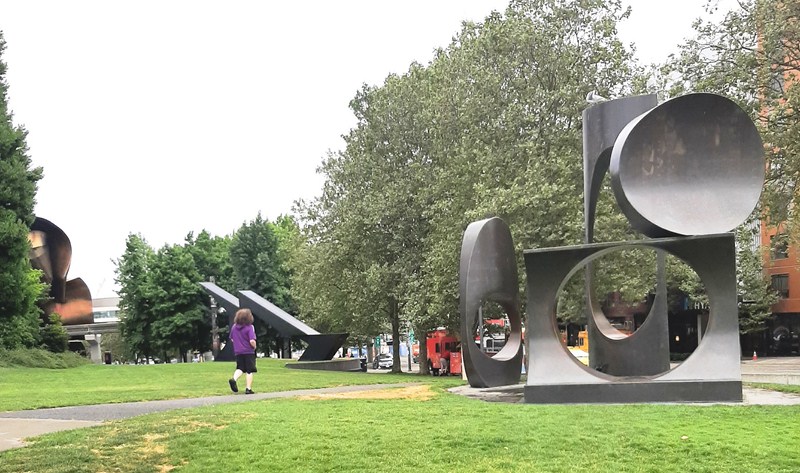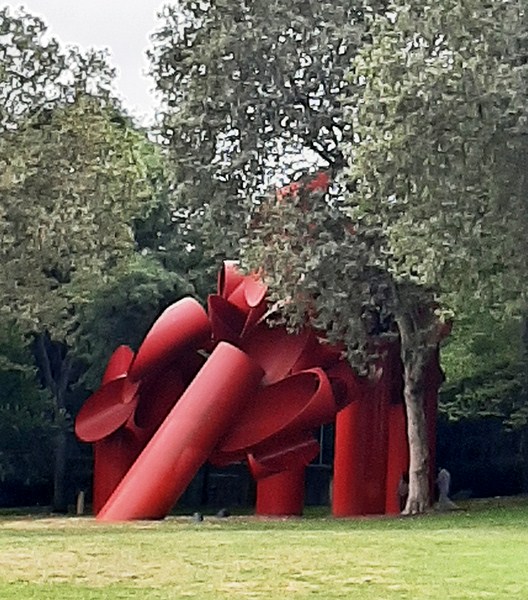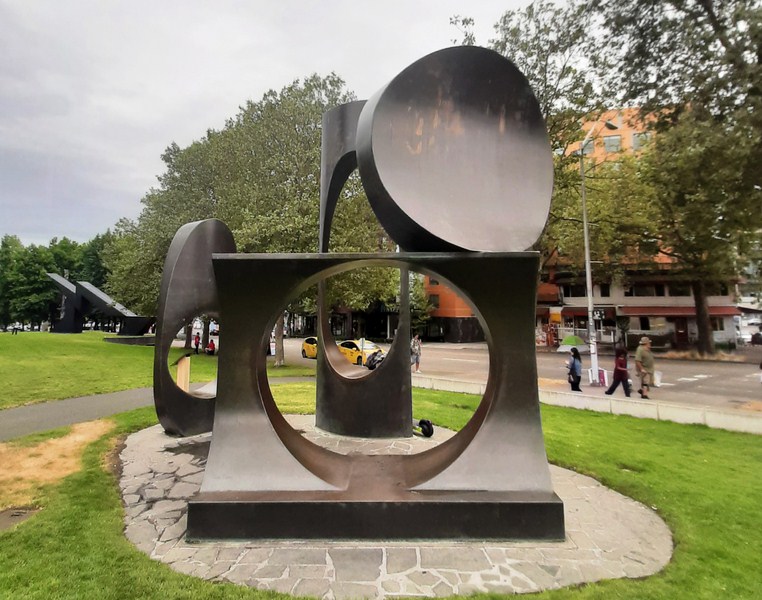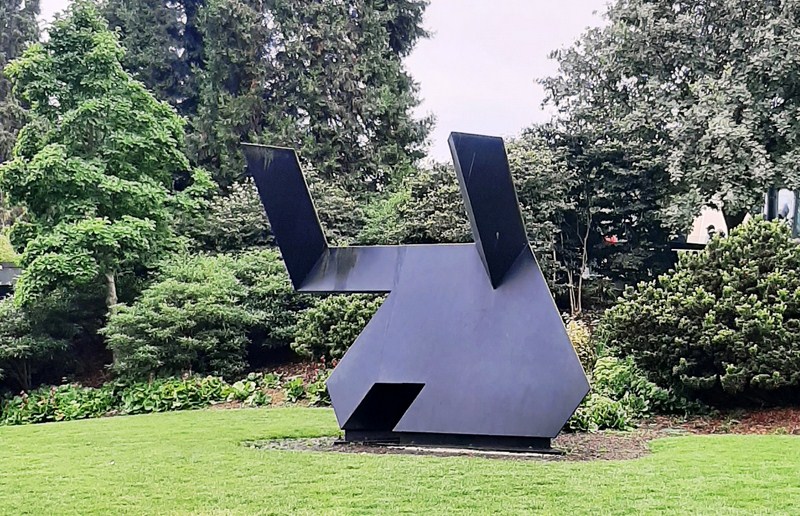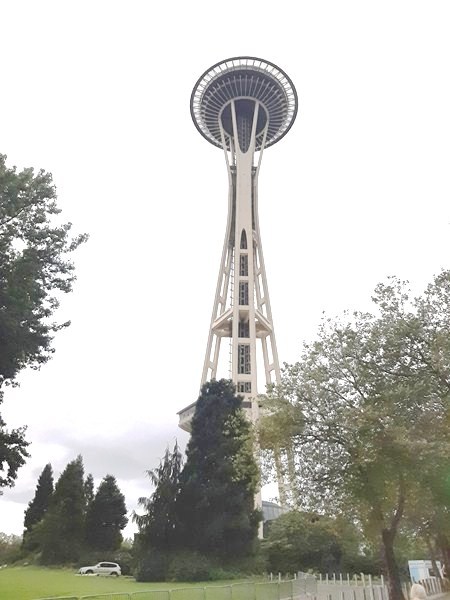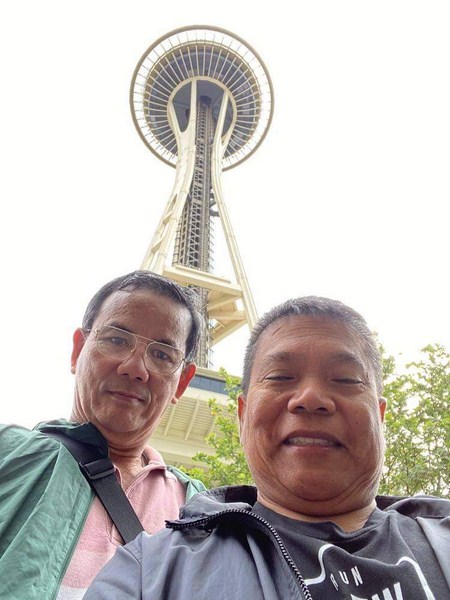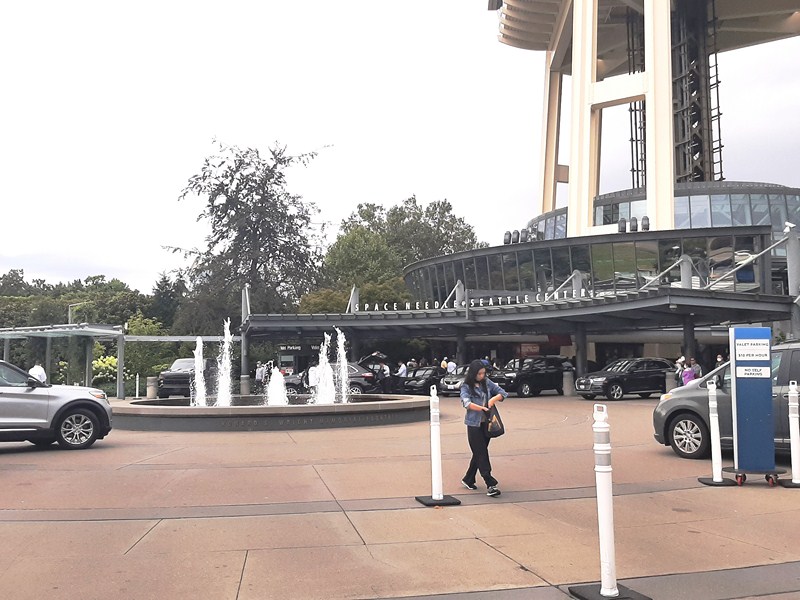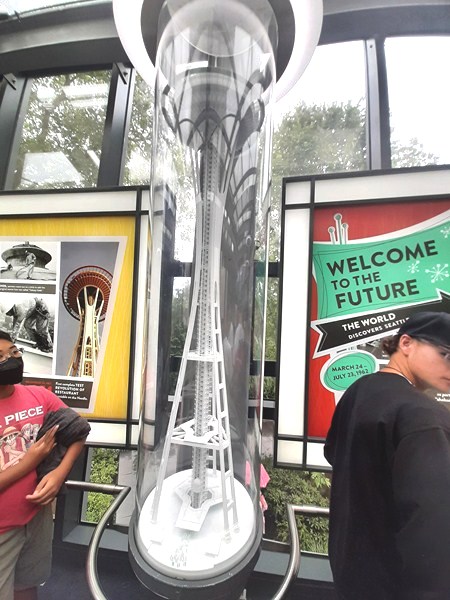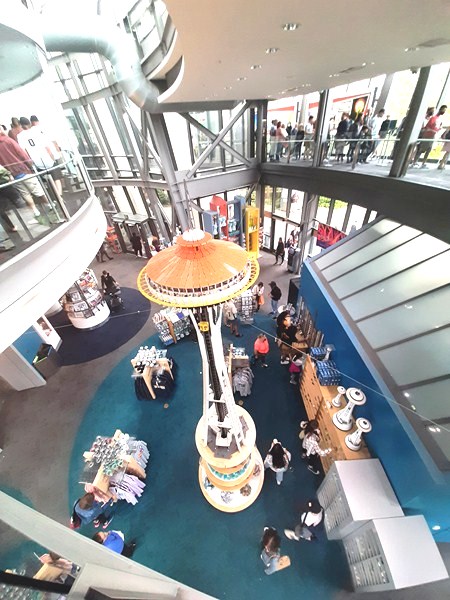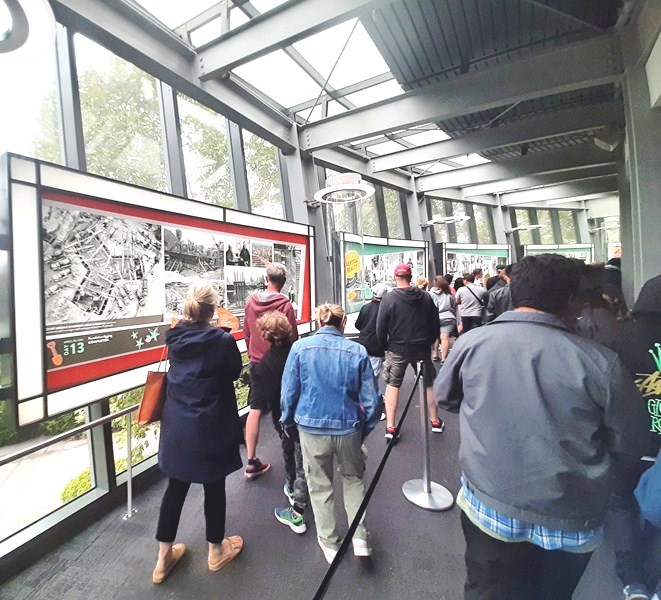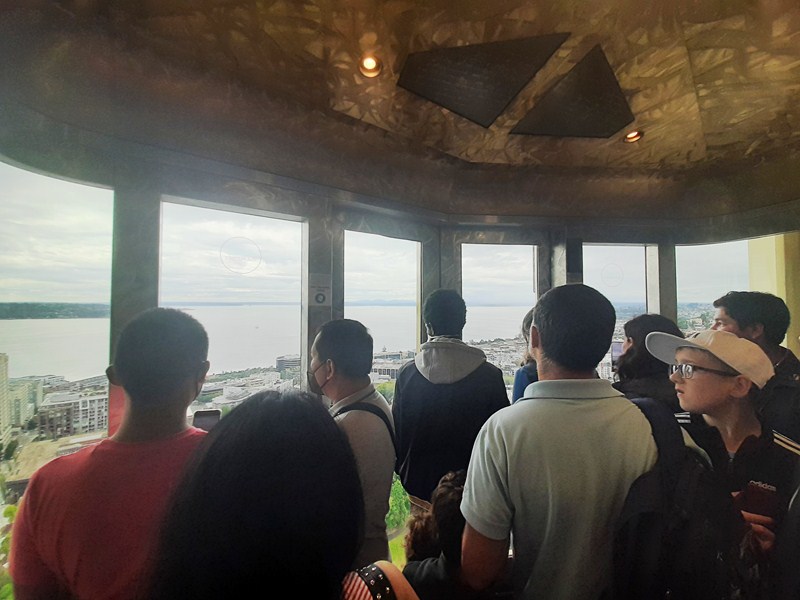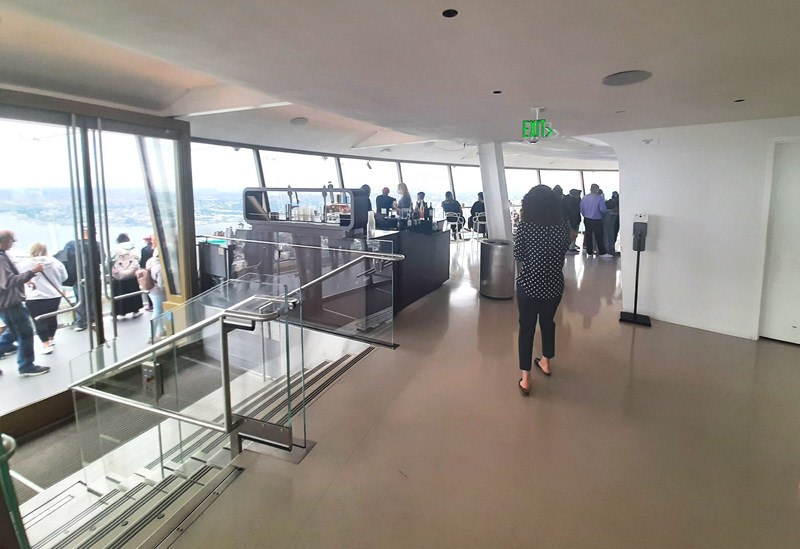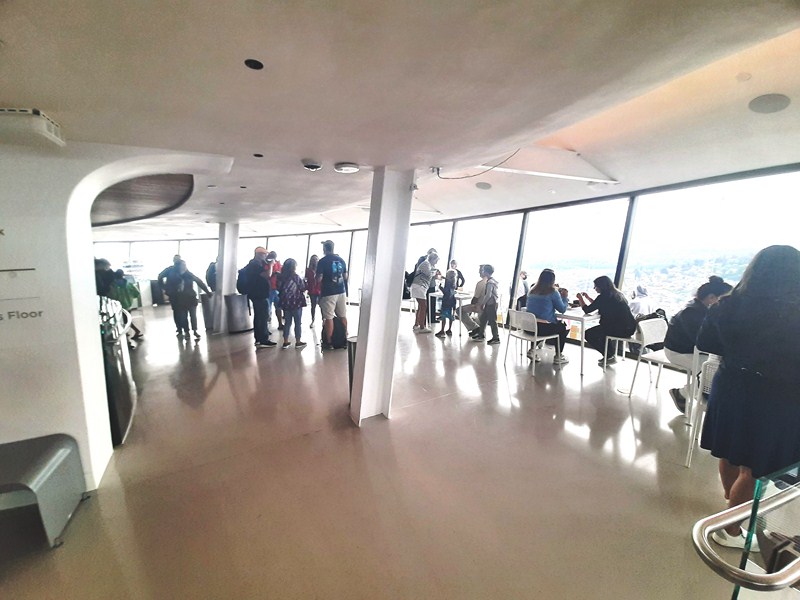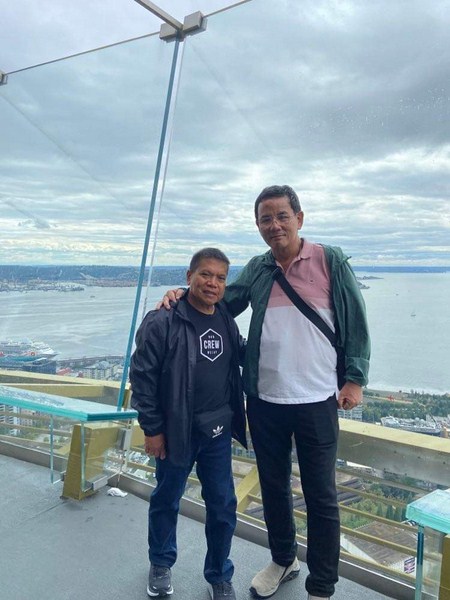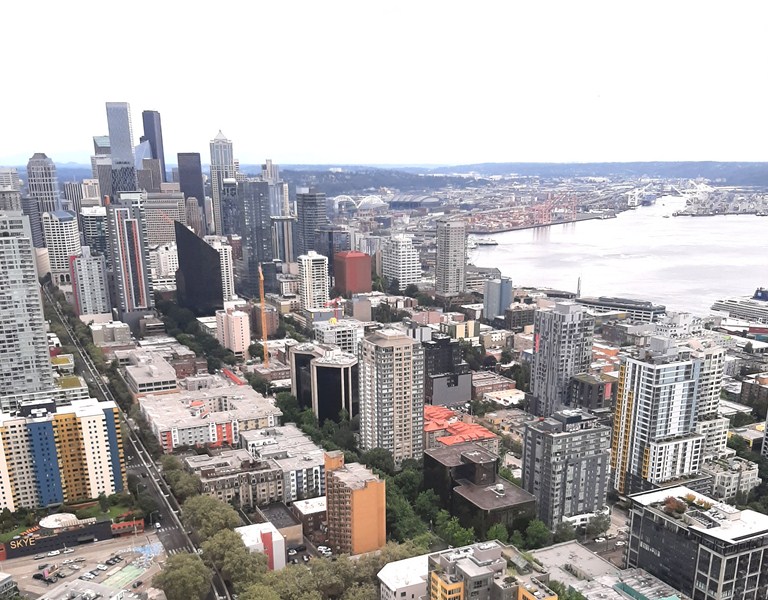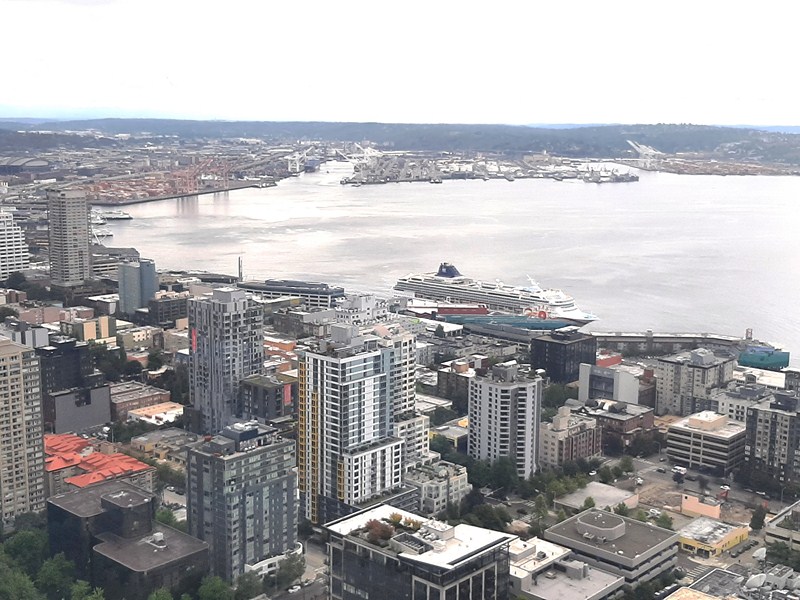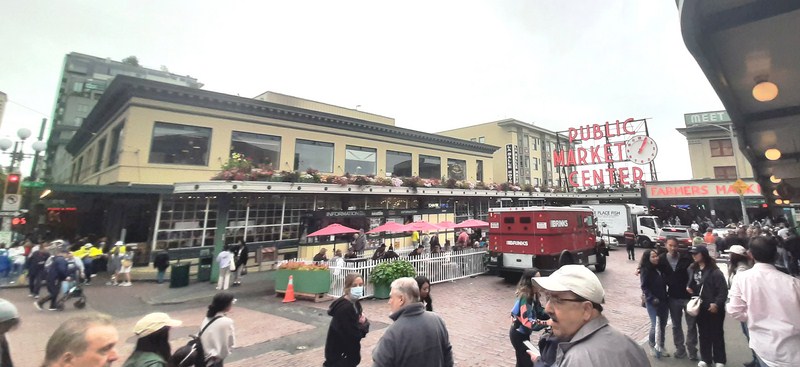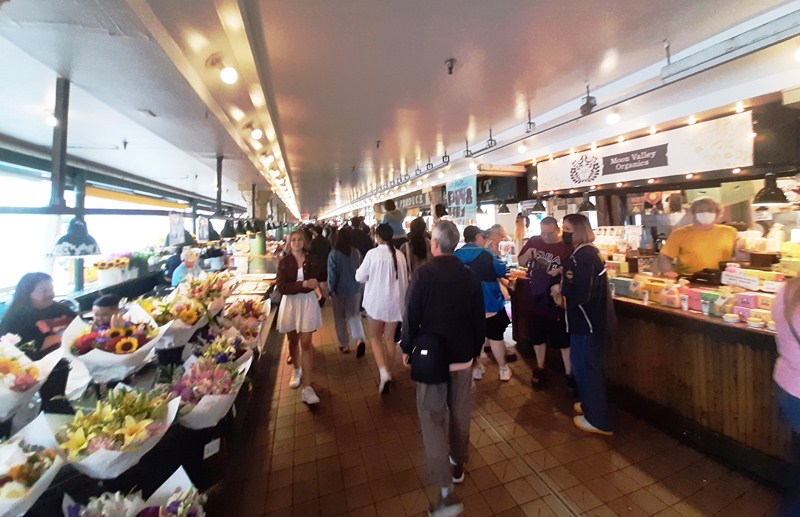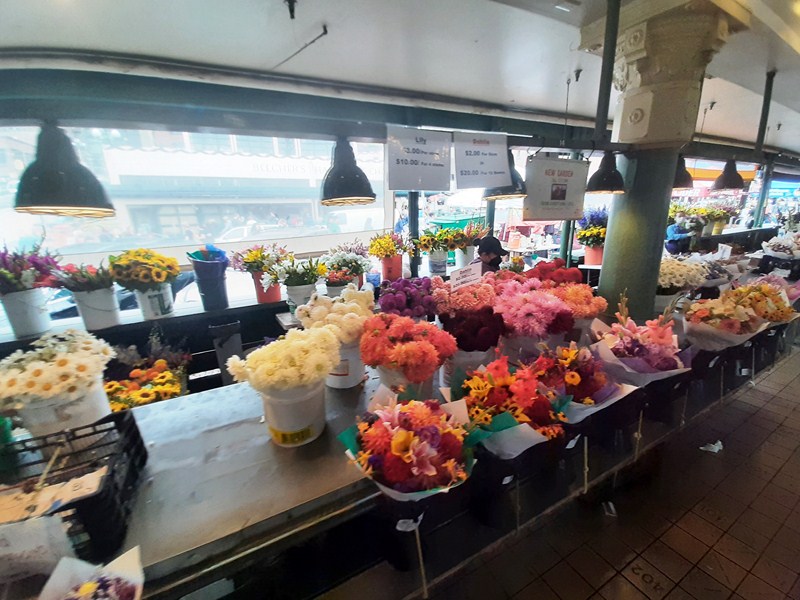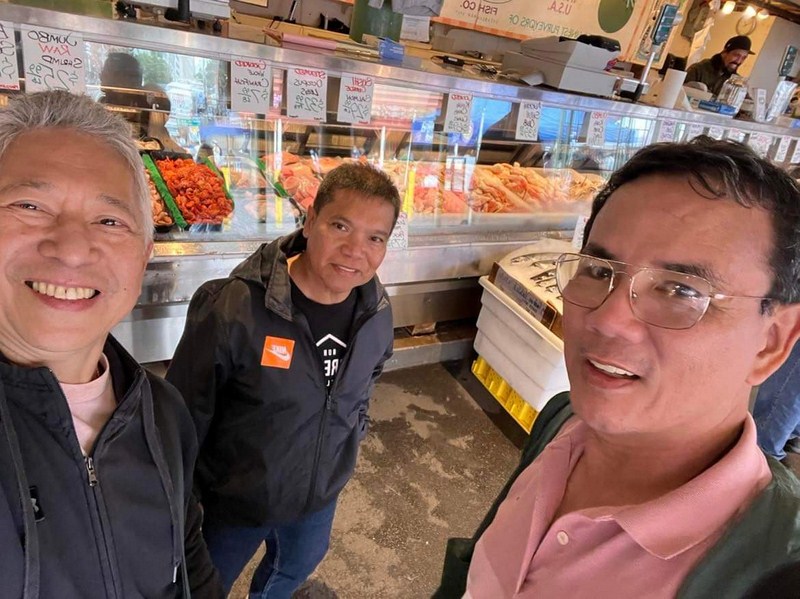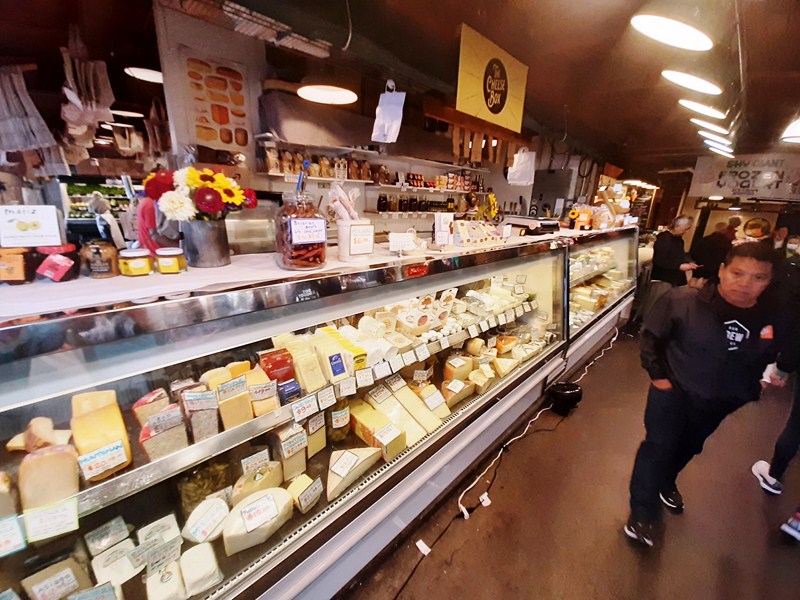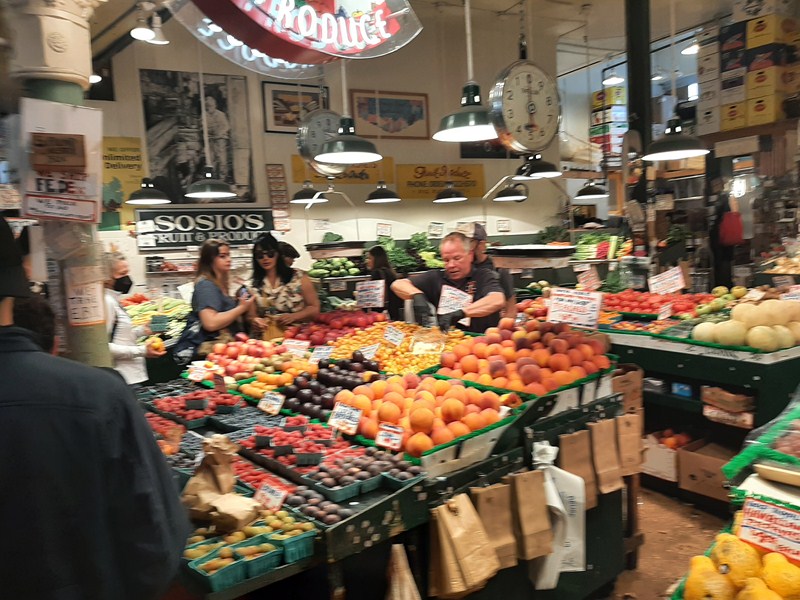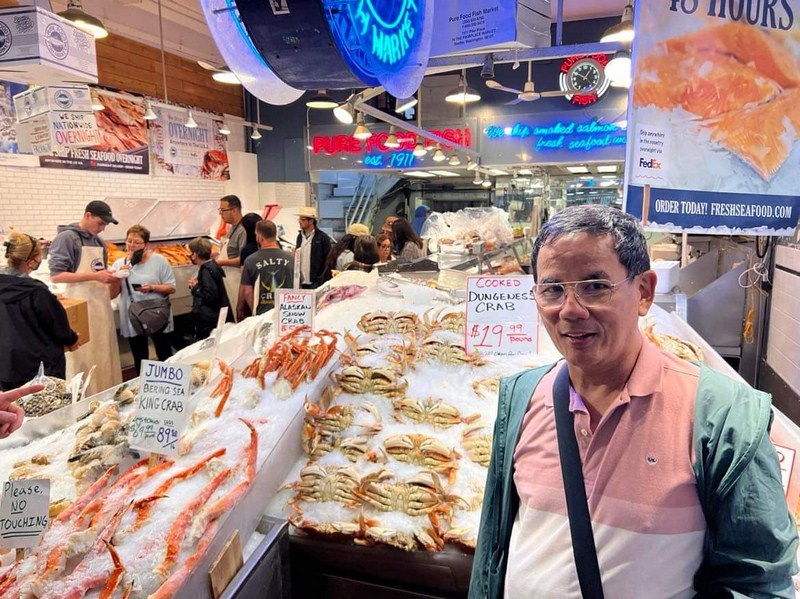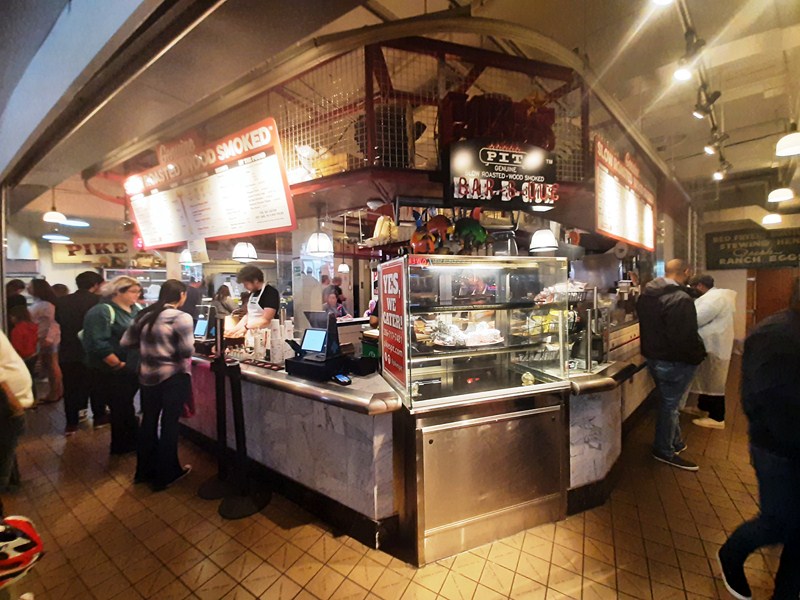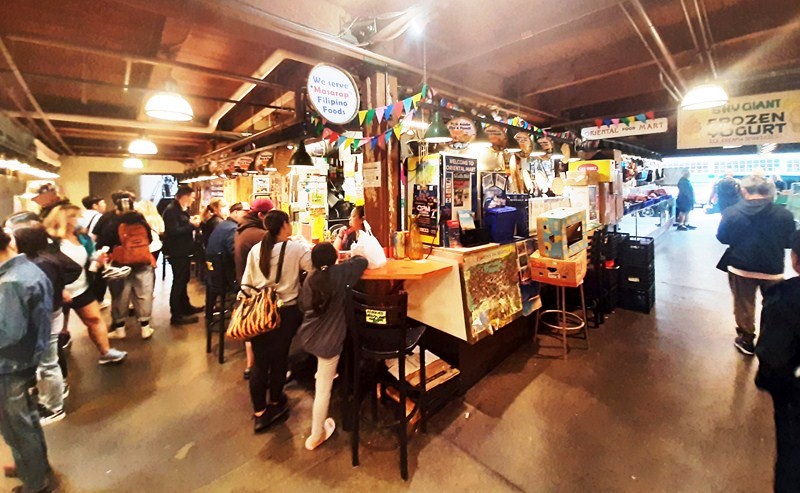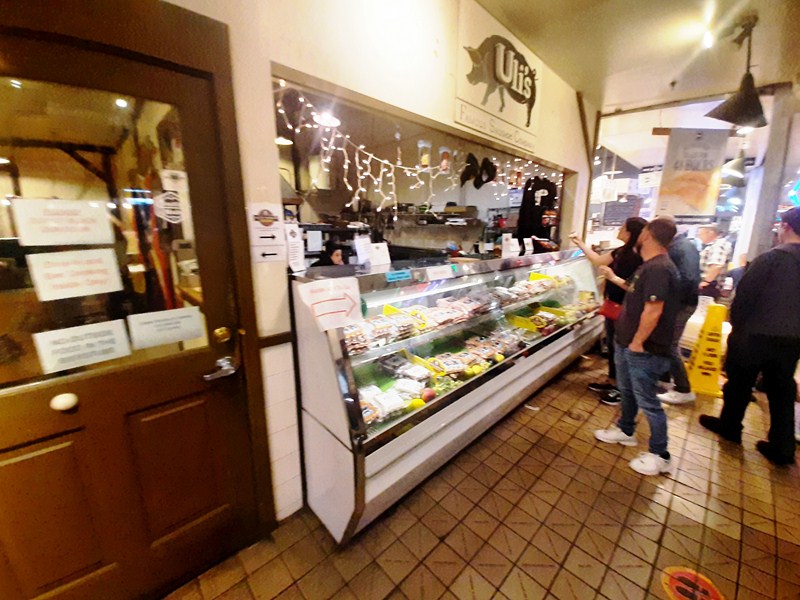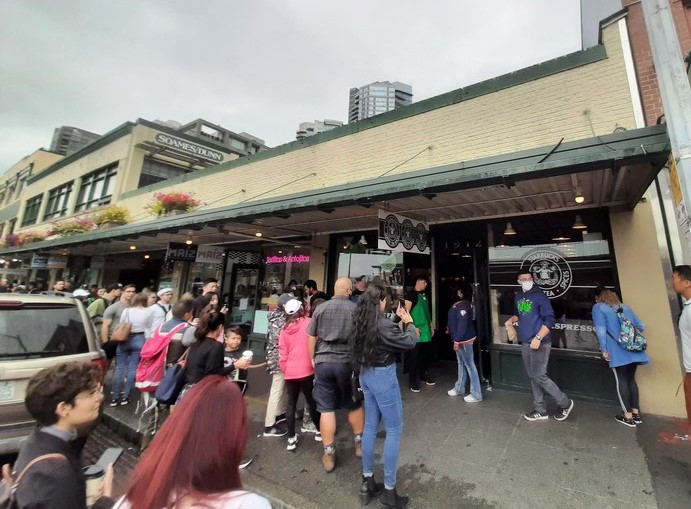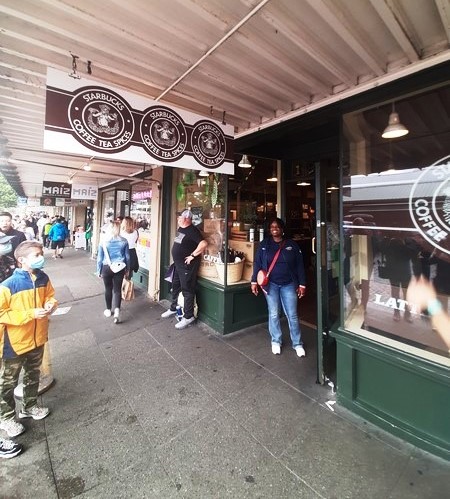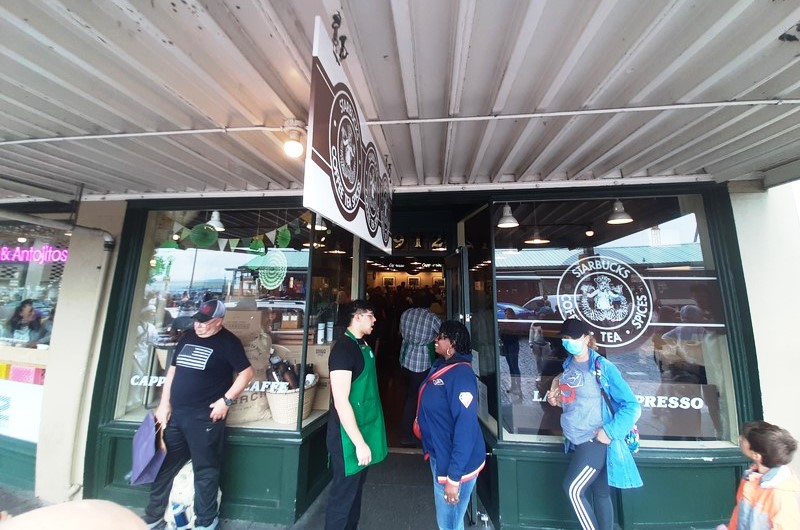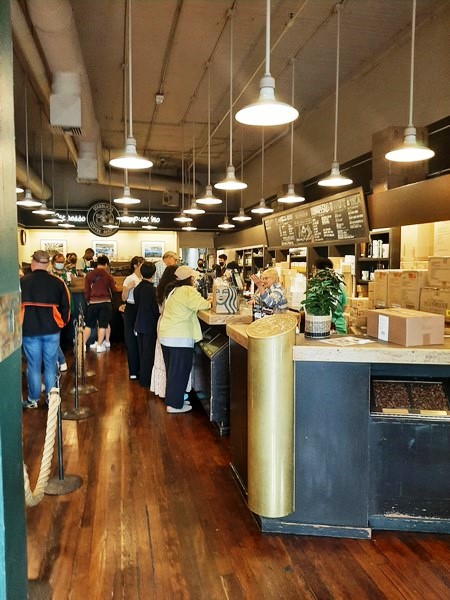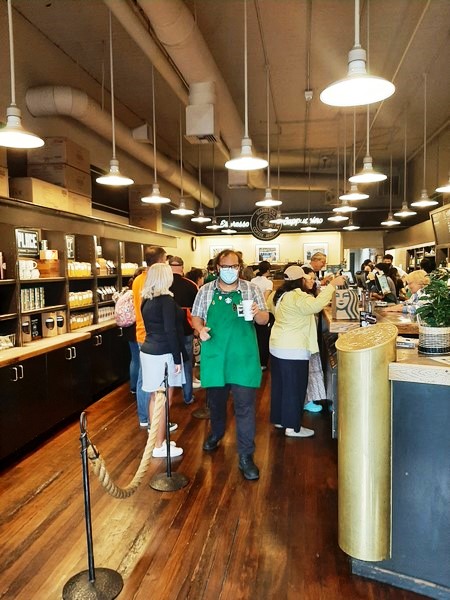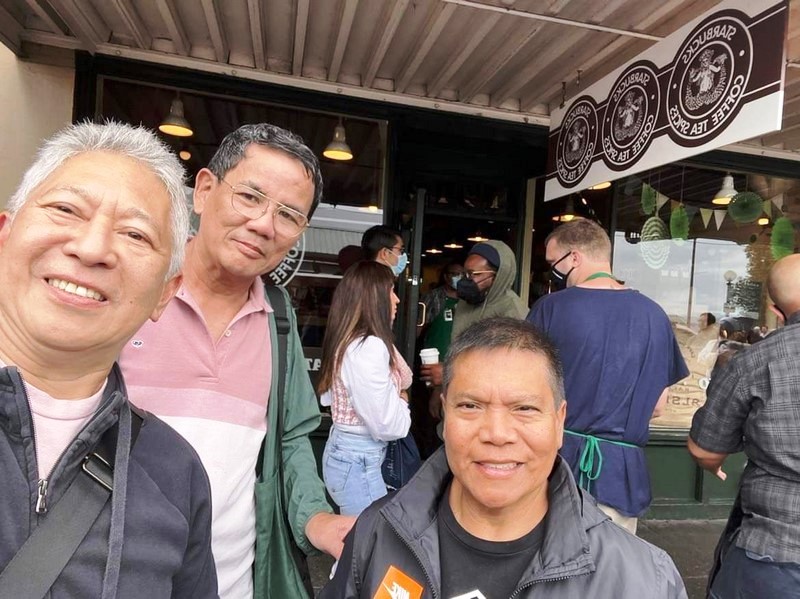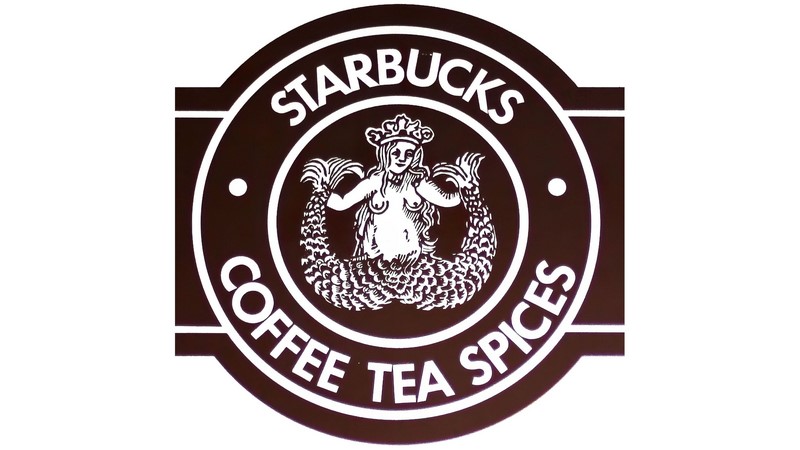The Seattle Center landscape is dotted with art and architectural works that together form urban vistas of mixed form and scale. The Sculpture Garden, at Broad Street Green, a nearly three-acre open space, is framed by the retro-futuristic backdrop of the Space Needle and the post-modern Experience Music Project building. It is made up of four unique pieces.
Check out “Space Needle“
Ronald Bladen’s Black Lightning (1981), a striking, black-painted monumental steel sculpture, is currently sited in the Sculpture Garden southeast of the Space Needle. Measuring 355.6 x 1706.9 x 1120.1 cms. (140 x 672 x 441 in.), it’s simple Z-shape outlines the iconic form of lightning and sharp edges, formed from the juncture of acute angles, animate the black steel bolt with alternating planes of light and shadow. Two polygonal bases, reminiscent of blacksmith’s anvils, support the sculpture.
The Alexander Liberman‘s Olympic Iliad (also known as Pasta Tube), a 1984 orange-red painted steel sculpture consisting of large steel cylinders cut at different angles and lengths, is installed in 1984 on the lawn southwest from the Space Needle. It was featured on the cover of Brazilian musician Amon Tobin‘s album Bricolage.
Doris Chase’s Moon Gates, a group of three bronze sculptures, from 9′ to 17′ tall, that play with oppositions inspired by space and form, was installed in 1999 and is located in the Sculpture Garden just south of the Space Needle. In the artwork, two sculptures (one rhomboid and one ovoid), with convex surfaces, are each pierced by a circular hole. The third sculpture’s concave surface also contains a round void at its center but its missing piece can be found attached to the top of the sculpture on a bearing that rotates. A gift to the city of Seattle by Seattle Center Foundation, Chase’s Moon Gates was selected, with Alexander Liberman’s relocated Olympic Iliad, as the completing piece for the garden.
Moses, a black-painted, mild steel sculpture by American Tony Smith (1912-1980, is located just northeast of the base of the Space Needle. Fabricated in 1969 and measuring 460 x 350 x 223.5 cms. (181 1/8 x 137 13/16 x 88 in.), it has been on the Center’s grounds since 1975. The abstract sculpture, weighing 5,500 lbs., is a geometrical abstract composition consisting of connected solid black steel volumes. It is the first major art acquisition under the city’s 1% for Art program.
Sculpture Garden: Broad Street Green, Broad and John Street, Seattle Center, Seattle, Washington

